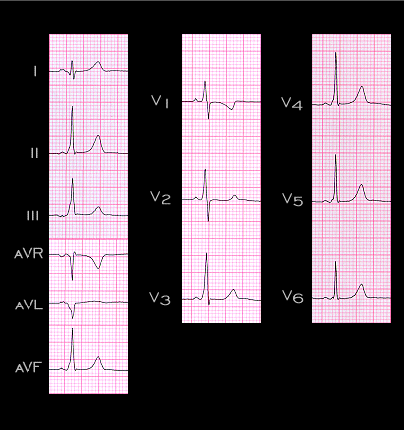
This tracing was recorded from the same patient on the next day. It now shows ventricular pre-excitation (WPW). The delta wave is positive in leads V1-V3 and the R-S ratio in these leads is greater than 1. These findings, coupled with the negative delta wave in lead aVL, suggest that the bypass tract was located in the left lateral region of the AV ring. This location was confirmed by electrophysiological studies and the bypass tract was ablated.
In this patient, it is most likely that the tachyarrhythmia was due to reentry and that the antegrade pathway of the re-entry circuit within the AV node, resulting in the narrow, normal QRS complex present during the tachycardia. It is also highly likely that the retrograde pathway was the bypass tract, and that the retrograde P wave was located within the ST segment and probably responsible for the ST segment depression present during the tachycardia.
